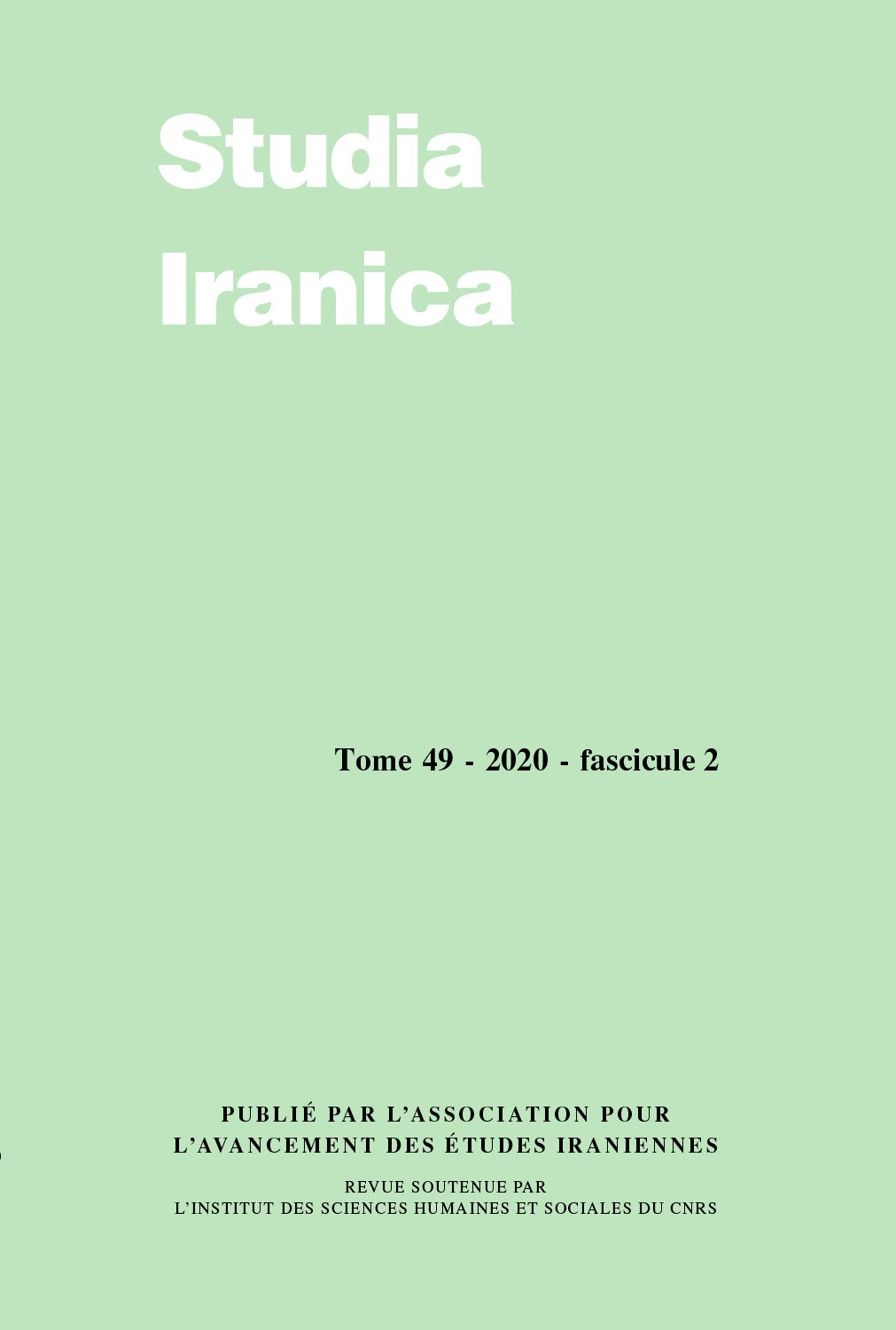 previous article in this issue previous article in this issue | next article in this issue  |

Preview first page |
Document Details : Title: About 'Paper' in Russian Subtitle: Pahl. pambag, Rus. bumaga Author(s): OGNIBENE, Paolo Journal: Studia Iranica Volume: 51 Issue: 1 Date: 2022 Pages: 81-99 DOI: 10.2143/SI.51.1.3292133 Abstract : The name of the paper in Russian is different from that of all other Slavic languages and has long attracted the attention of scholars. The term used in Russian is bumaga. According to Vasmer, this word should be connected to Italian bambagia, term of Eastern origin that would come from the MPers pambag 'cotton'. The export of 'western' paper to Russia would be at the basis of the acquisition of the term. However, the term is initially attested in Russian precisely with the meaning of 'cotton', therefore there is also the possibility of a direct loan, or its arrival through the mediation of the Armenian communities of Crimea (see Armenian bambak 'cotton' also coming from MPers). In this discussion some scholars of Byzantine Greek also took part. They think that Greek χάρτης βομβύκινος would be connected to the name of Hierapolis Bambyce, a city famous for the production of 'oriental' paper. The article presents the current state of the art and proposes some new reflections on this topic. Le terme russe indiquant le papier, bumaga, diffère des mots utilisés dans toutes les autres langues slaves et depuis longtemps il retient l’attention des spécialistes. Selon Vasmer, le mot serait connecté à l’italien bambagia, un terme d’origine orientale provenant du moyen-perse pambag, «coton». L’exportation du papier «occidental» vers la Russie serait à la base de l’acquisition du terme. Néanmoins, celui-ci est initialement attesté en russe avec le sens de «coton». Sur cette base, la possibilité qu’il s’agit d’un prêt direct, ou bien que le terme ait été introduit par la médiation des communautés arméniennes de la Crimée (cfr. le mot arménien bambak, «coton», lui aussi d’origine moyen-perse), a été suggérée. Les spécialistes de la langue grecque byzantine ont également participé à cette discussion, proposant une mise en relation entre le grec χάρτης βομβύκινος et Hierapolis Bambyce, une ville célèbre pour la production du papier «oriental». L’article présente l’état de l’art actuel et propose de nouvelles réflexions sur le sujet. |
|


